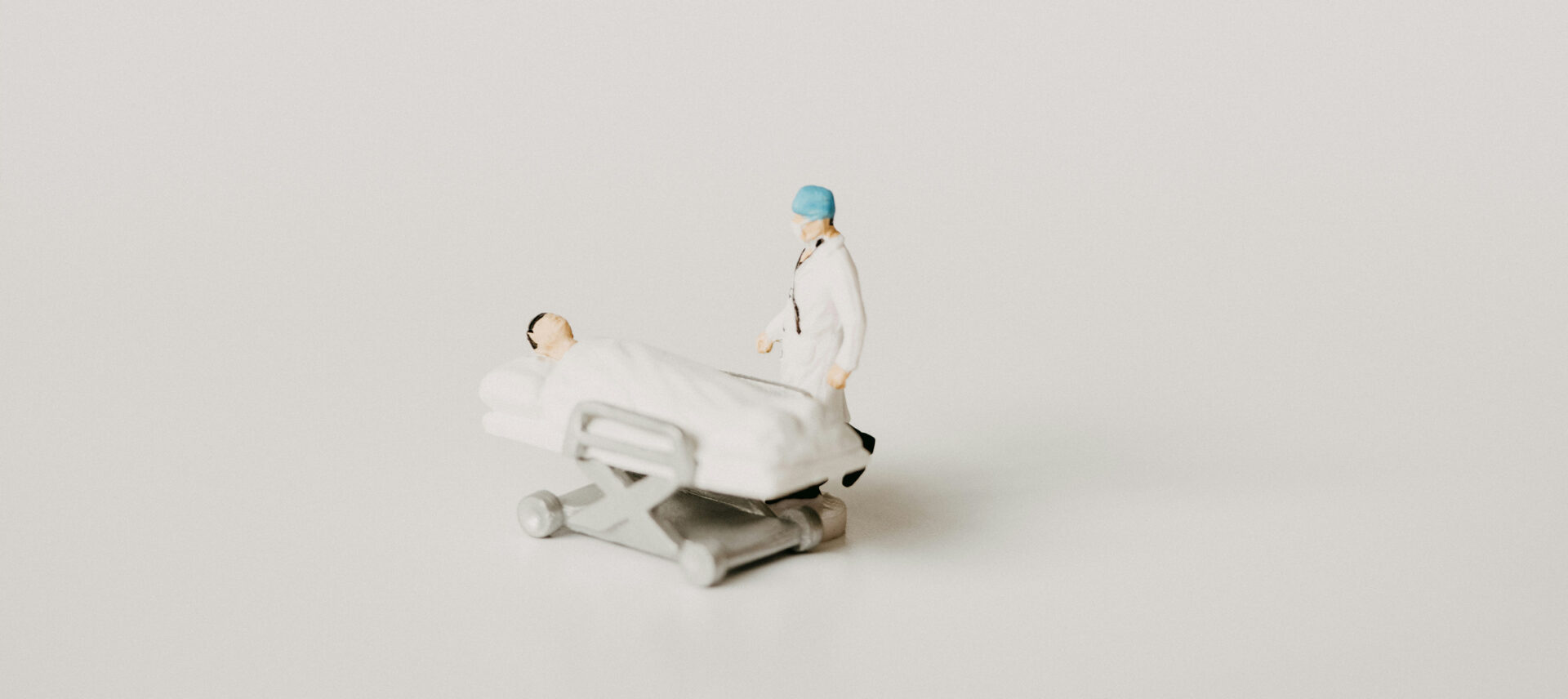
Article
The State of Healthcare: 5 Shifts and Their Implications for Medical Device Development
Finding a market edge in MedTech product development is difficult. Learn 5 healthcare shifts for MedTech device makers to set your product up for success.
In MedTech product development, the pace of innovation is surprisingly slow — especially if you want to launch a groundbreaking Class III device. Meeting stringent regulatory requirements, investing in clinical trials, and putting prototypes through multiple rounds of testing are all significant, time-consuming obstacles on the path to commercialization.
With so many hurdles to clear, how can you get ahead of your competitors and capture the market edge you’re after?
First and foremost, make sure your medical device product development roadmap is proactive, not reactive. In other words, think like a fast-moving start-up or industry disruptor. Scan the horizon and identify emerging areas of opportunity for your company to lead the forefront of innovation, not follow it.
To help you do just that, we’ve identified five healthcare shifts you should be aware of so you can set your product portfolio up for success.
1. As Staffing Shortages Abound, Designing For Usability Is Even More Critical
Healthcare industry leaders have talked about looming staffing shortages for decades. COVID-19 brought this crisis to a head, exacerbating staff burnout and causing many doctors and nurses to leave the profession altogether. Now, there aren’t nearly enough new doctors and nurses entering the workforce to replace them — forcing hospitals, clinics, and long-term care facilities to hire traveling doctors and nurses to fill the gap.
What does this mean for you? Designing for usability is non-negotiable.
Many of your product’s end users simply don’t have time to become familiar with how your device works. They might miss the in-service training. They’re interacting with different instruments and devices depending on the every hospital or clinic they work at. And in a post-COVID world, fewer sales reps are allowed in the OR to answer questions and advise doctors and nurses on how to properly set up and use their devices. Surgical teams are on their own.
Given these limitations, you can’t design your MedTech products assuming that doctors and nurses will have time to get up to speed on how to use them. You need an exceptionally user-friendly, intuitive design that eliminates uncertainty and frustration while improving patient outcomes.
2. Slim Profit Margins Make “One Stop Shop” Product Portfolios More Attractive
Hospital margins are incredibly low, and price tags matter more than ever. As a result, hospitals want to streamline and optimize procurement processes to reduce overhead and save time.
One way for you to compete is to design a more cost-effective product. But this strategy will only get you so far.
For one thing, cheaper products don’t always lead to better outcomes. There’s only so much you can shave off a product’s per-unit cost. The bigger issue is this: More and more, procurement officers don’t want to buy a la carte products. They want to narrow their options and purchase as much as possible from one vendor. That means they’re looking for product bundles — at bundled pricing — that function as a total procedure solution.
One-stop solutions offer a variety of benefits for hospitals and product developers. Here are a few:
- Pre-packaged kits make it quick and easy for hospital staff to prep for and clean up after procedures, which helps keep the surgical schedule on track.
- Kitting allows you to reduce shipping, packaging and sterilization costs further driving down your COGS.
- Initial and ongoing sterilization is streamlined and more cost-effective since everything can be sterilized together rather than as individual units.
If you’re still looking at your MedTech products in a silo, now’s the time to revamp your product development roadmap. Rather than looking at each device as a standalone, imagine how you can kit products together to make them an attractive option for hospitals and clinics.
3. The Rise of Outpatient Surgical Centers Offers Opportunities for Market Expansion
It’s no secret that hospital visits and stays are inordinately expensive. To control costs and maximize profit, more and more procedures are being moved from the hospital environment and into ambulatory surgical centers (ASCs) and clinics.
These outpatient centers function differently than hospitals and are designed in an entirely novel way. They usually don’t have sterile process departments (SPDs) on-site to clean, disinfect, and sterilize reusable products. Rather, they source single-use products that can be easily disposed of. Or they ship devices back to the manufacturer or to a third-party service to sanitize them, re-kit them, and put them back in circulation.
Furthermore, ambulatory surgical centers don’t tend to invest in capital equipment the way hospitals do. They either limit the scope of the procedures they offer for efficiency and might rent vs. buy capital equipment for set periods of time to control initial cost burdens.
In response, many medical device companies are creatively financing the up-front costs of an ASC or clinic by providing deferred payment plans and rental options in exchange for multi-year procedure commitments.
These new environments and ecosystems offer tremendous opportunities to grow and evolve your product line — if you’re willing to move away from a universal MedTech design mentality and create solutions that meet this specific set of expectations and demands.
4. Regulatory Changes Are Becoming the Driving Force of Product Innovation
Regulatory requirements and reimbursement codes (CPT codes) are always evolving. This constant fluctuation — combined with the need to control costs as described in section one — means many medical providers aren’t motivated to change their process or invest in new product solutions until they’re required to.
To find market opportunities amid inertia, stay on top of the regulatory landscape. This involves:
- Keeping your finger on the pulse of what’s changing now and what’s likely to change down the line
- Knowing which products are performing well and which have high rates of complications since poor patient outcomes are a driving force of increased scrutiny and regulation
- Tracking how the reimbursement payment codes that apply to your device are shifting, and how different insurance providers accept these codes
- Identifying opportunities to build devices into your product roadmap that meet new regulatory standards while offering a unique competitive edge
By looking ahead and doing upfront design and development work proactively, you could beat competitors to market with the first device to meet a new standard or comply with stricter regulations. And since providers are reluctant to make changes once they acquire new products, being first means you have a better chance of cornering the market long term.
One more thing to bear in mind: Many international standard organizations invite industry representatives to serve on their technical committees. So if your company doesn’t have a seat at those tables, fix that.
5. Hospital Admins Want Solutions That Save Hours, Not Minutes
Healthcare providers — and surgeons in particular — are incredibly busy and strapped for time. They frequently meet with patients back-to-back and move quickly from one procedure to the next. And of course, hospitals want to increase the number of patients they can see and procedures they can complete on any given day.
So it’s no wonder that many MedTech developers are already trying to create devices that shave off minutes in the OR. Every minute in the OR is expensive, so every minute saved is a value-add, right?
Not exactly.
We’ve spent a lot of time in hospitals and clinics to conduct user research for the medical devices we design. Time and again, hospital administrators tell us that unless procedures can be shortened so much that they can add another one to the schedule, mere minutes don’t matter. In other words, saving a minute here and there doesn’t make an impact — but saving 50+ minutes with a single device or a streamlined solution might.
MedTech developers who start looking at new ways to innovate — i.e. repeatable processes, better outcomes, improved usability, fewer use errors — will have a stronger market advantage than those who focus on cutting a few minutes off of one specific step in a complex, hours-long procedure.
AI, robotics, and automation will undoubtedly play an outsized role here — so be sure you’re factoring in product plans that harness their time-saving power.
M3 Can Help You Design the Future of MedTech
As a medical device design firm, we’ve worked with some of the world’s leading MedTech innovators and helped them strengthen and grow their competitive advantage amid significant industry challenges. We can help you, too. So let’s talk.
See a few examples of our award-winning MedTech work:





